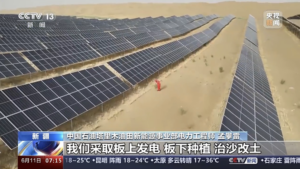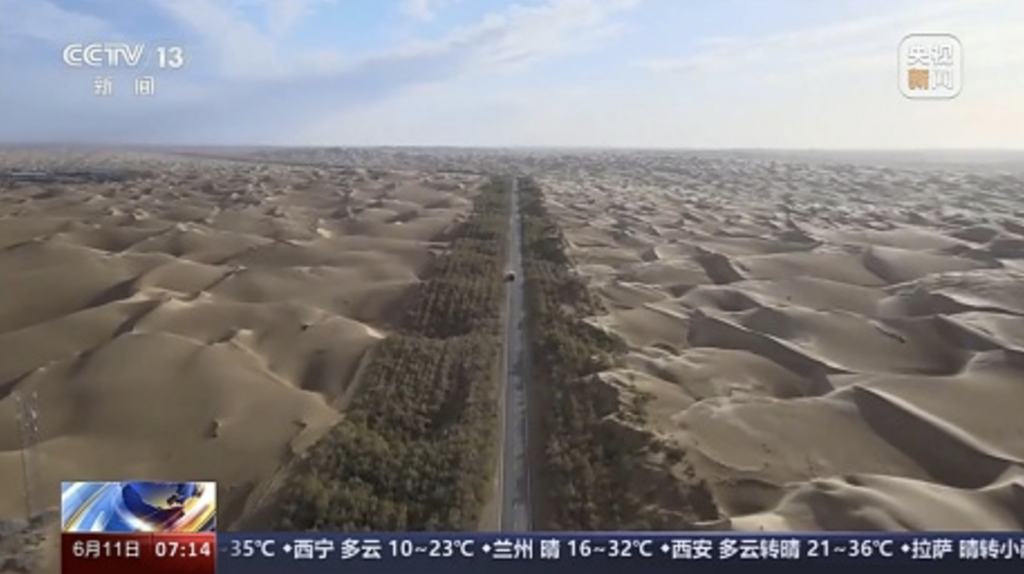http://j.people.com.cn/n3/2024/0611/c95952-20180050.html
The Tarim Desert Road to the Tarim Oilfields, opened in 1995, is 52 kilometers long. It runs north and south through the Taklamakan, China’s largest desert.
In order to prevent sand erosion on the road, China Petroleum, which operates the Tarim Oilfields, since 2005 has planted 436 km2 of environmental protection forest on both sides of the road irrigated by drip technology. To this end, 109 well huts were built along the road to pump up groundwater from the desert. In January 2025, 86 of these well huts that previously ran on diesel were upgraded to solar power generation. Associated energy storage cabinets can store seven hours of electrical energy, allowing the pump equipment to operate normally even when there is no sunlight.
The total power generation capacity of the solar power plant is said to have reached 3,540 kilowatts (kW), with an annual power generation of 3.62 million kWh. This power generation meets the daily irrigation needs of the environmental protection forest. As the protection forests on both sides of the desert road have an annual carbon fixation capacity of 6.4 tons per ha, the entire protection forest can fix 20,000 t of carbon per year. This is calculated to neutralize the carbon emissions of passing vehicles, realizing a “zero-carbon desert road”.



